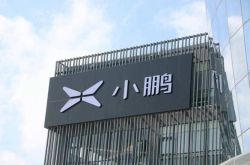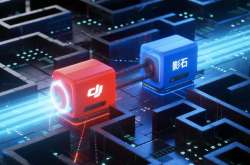When Wall Street Casts a Pessimistic Eye on AI: Following a $5.6 Trillion Market Value Plunge, the Sino-US Computing Power Rivalry and the Path to Commercialization Breakthroughs
![]() 11/11 2025
11/11 2025
![]() 552
552
The Nasdaq index's 3% drop marked its worst week since Trump unveiled his sweeping tariff strategy.
In a single week, the market capitalization of eight AI behemoths dwindled by $800 billion (roughly equivalent to RMB 5.6 trillion). As tech leaders at the Davos Forum shifted their discourse from 'AI revolutionizing everything' to 'when the bubble will burst,' an AI boom that kicked off with fervent capital investment is now confronting an unprecedented phase of calm.
However, this does not herald the end of AI; rather, it signals the dawn of a global competitive realignment. Amid Wall Street's confidence fluctuations, China and the United States have already embarked on a deeper level of competition across areas such as computing power infrastructure, technological pathways, and commercialization, with global capital flows serving as a pivotal indicator of this rivalry.
From the Exuberance of 'Market Dream Rates' to the Agony of Valuation Restructuring
In November 2025, AI emerged as the most significant 'storm center' in global capital markets. By November 7, the combined market value of the eight AI giants listed on the US stock market, including NVIDIA and Microsoft, had contracted by approximately RMB 5.6 trillion, with the Nasdaq index plummeting more than 3% in a week, marking its worst performance since April. Goldman Sachs even cautioned that AI-related assets could face a 20% correction in the next 1-2 years, as investor tolerance for 'market dream rates' rapidly diminishes.
1. The Disconnect Between 'Faith' and 'Reality' in General-Purpose Models
Early capital's blind pursuit led to an over-concentration of resources in the arms race for general-purpose large models (AGI). However, harsh commercial realities are surfacing: OpenAI, as a frontrunner in the industry, invested over $15 billion in R&D in 2024 but generated less than $3 billion in commercial revenue, failing to achieve positive cash flow. This 'burn money for growth' model saw its high valuation rationale crumble immediately after changes in the macro interest rate environment (cooling expectations for interest rate cuts). Capital began to question: When will the exorbitant R&D investment translate into sustainable profits?
2. Commercialization Capabilities Now Take Center Stage
The market's retreat is not a blanket withdrawal but rather a precise 'stress test.' Capital is swiftly pulling out from 'storytelling' companies and flowing toward those that have demonstrated their commercialization prowess.
Vertical sectors are gaining traction: Hippocratic AI, which focuses on the healthcare sector, has seen its valuation double in a year due to its clear applications in simulated diagnosis and chronic disease management; reasoning startup Fireworks AI has secured $250 million in financing, reaching a valuation of $4 billion, by significantly reducing model invocation costs and latency.
Domestic cases corroborate this trend: Meinian Onehealth witnessed its AI-related business revenue soar by 71.02% year-on-year in the first three quarters of 2025. Its CT 'one-scan multiple-check' and AI intelligent primary inspection systems not only enhanced service efficiency but also directly contributed to profits. This clearly indicates that capital's new benchmark is no longer the number of model parameters but the depth and efficiency of solving specific industry pain points.
3. Restructuring of Financing Logic: From 'Betting on Technology' to 'Backing Assets'
A pivotal shift is underway: capital is transitioning from 'pure technology bets' to 'asset binding.' Venture capital (VC) enthusiasm for early-stage model companies is waning, while massive debt capital is pouring into AI's 'iron and steel infrastructure' (computing power infrastructure).
In September-October 2025, tech giants like Meta and Oracle issued a total of $75 billion in AI investment-grade bonds.
Blackstone Group initiated a $3.46 billion commercial mortgage-backed securities (CMBS) offering for QTS data centers.
This foreshadows that heavy assets like data centers and chip factories are becoming more capital-attractive collateral (collateral with stable cash flows) in the AI era, sparking a debt-driven infrastructure boom in AI.
The 'Mirror Image' Confrontation in Sino-US Systemic Competition and Pathways
Against the backdrop of capital cooling, the AI development paths of China and the United States have become increasingly distinct, presenting an intriguing 'mirror image' relationship: the United States pursues technological 'commanding heights,' while China builds industrial 'strongholds.'
The 'Elitism' Dilemma Under Technological Hegemony
The US development model is 'technological blockade + capital-driven,' aiming to maintain its global technological hegemony.
Strategic containment: Through the 'Chip Four Alliance' and constantly updated export control rules (such as the further blockade of Huawei's Ascend chips in 2025), it attempts to build a 'small yard with high fences' to monopolize high-end computing power.
Closed-source monopoly: Top models like OpenAI and Anthropic adhere to closed-source strategies, building moats through patents and licensing. However, this has, to some extent, stifled innovation vitality, forming an 'elite club.'
Regulatory infighting: Over 260 AI regulatory bills have been introduced across US states, creating a compliance maze of '50 sets of new rules.' Hefty fines and complex processes in states like California and New York have driven corporate compliance costs up to tens of millions of dollars, forming a severe innovation shackle.
High costs: California's industrial electricity price (about $0.21/kWh) is several times higher than the subsidized electricity price in Chinese data centers (as low as $0.056/kWh). Rising energy and regulatory costs are eroding its technological first-mover advantage.
NVIDIA CEO Jensen Huang bluntly stated that 'China will win the AI race,' with his core anxiety stemming from this: under the dual pressure of rising underlying computing power costs and top-level regulatory costs, can the US innovation ecosystem continue to operate efficiently?
The 'Pragmatism' Breakthrough Under the Nationwide System
China's path is 'a new nationwide system + market vitality,' guided by 'inclusivity, win-win outcomes,' and industrial integration.
Scalable computing power infrastructure: The 'East Data, West Computing' project locates large chip clusters in energy-rich regions like Guizhou and Inner Mongolia, directly tapping into cheap green power. Huawei's Ascend 910B chip has achieved 80% efficiency of NVIDIA's A100 in some scenarios, with its CloudMatrix 384 super node performance rivaling that of the H100. Its domestic market share has reached 38%. ByteDance's bulk purchase of 100,000 Ascend devices marks the entry of domestic computing power substitution into a large-scale stage.
Open-source ecosystem breakthrough: Huawei's CANN open-source initiative and labs like DeepSeek have introduced efficient models, achieving reasoning capabilities comparable to GPT-5 at one-third of the cost. This technological inclusivity strategy has not only built a prosperous ecosystem domestically but also attracted supercomputing projects from Germany, France, and even Saudi Arabia internationally, breaking the closed-source monopoly.
Scenario-based Implementation and Feedback: China boasts the world's largest manufacturing and internet application scenarios. Red Bear AI has achieved a 98.4% self-service resolution rate in operator services, reducing costs by 40%; Meinian Onehealth has transformed nearly 600 physical examination centers nationwide into AI 'testing grounds.' This positive cycle of 'application-data-technology' constitutes China's unique industrial advantage: iterating technology while solving real-world problems.
Value Return: AI's Next Destination Is 'Industrial Efficiency'
Wall Street's retreat forces the entire industry to reconsider the ultimate value of AI. The answer is becoming clearer: AI's value lies not in how 'cool' the technology itself is but in whether it can restructure business processes and enhance industrial efficiency.
1. B2B Process Reengineering Becomes the Core Track
AI's true potential lies in 'process innovation' rather than 'function enhancement.'
International cases: Spellbook has increased the efficiency of legal contract drafting by dozens of times; Vic.ai has freed accountants from tedious record-keeping tasks, allowing them to focus on higher-value planning and analysis.
Domestic practices: Red Bear AI, through 'multimodal large models + memory science,' has closed the loop of enterprise customer service, training, and knowledge management, proving that 'AI-driven business processes' are the key to commercialization.
Morgan Stanley predicts that global data center construction will require $1.5 trillion in funding by 2028, reflecting the rigid demand for computing power infrastructure driven by AI value realization.
2. Deepening of Computing Power Localization
Facing blockades, China's computing power industry chain continues to make breakthroughs in chip design, packaging, and system integration. Chengdu Micro's RF direct-sampling ADC chip, Yicheng Technology's mass production of board-level high-density products, and Huawei's Ascend supply chain localization rate exceeding 85% all indicate that the domestic computing power ecosystem is advancing from 'usable' to 'user-friendly,' laying a solid foundation for the autonomous control of core technologies.
3. Rebalancing Governance and Innovation
The consensus at the Davos Forum is that AI governance requires 'less intervention during the innovation germination stage (embryonic stage) and stronger regulation during the diffusion phase.' China's practices are seeking a balance, such as the 'Implementation Opinions on the Application and Development of 'AI + Healthcare'' setting clear development goals while defining compliance bottom lines for data security and clinical validation. Industry-initiated safety standards and mechanisms like 'data trust alliances' are exploring a sustainable path of 'balancing development and security.'
When the Tide Recedes, True Worth Emerges
Short-term market value fluctuations cannot obscure the revolutionary nature of AI as a general-purpose technology (GPT). Wall Street's 'cooling down' is not a denial of AI but a correction of irrational speculation.
This calm period triggered by capital retreat marks AI's transition from adolescence to maturity. When capital no longer pays for 'concepts,' true technological innovation and value creation can finally surface.
For participants in China, the United States, and even globally, the ultimate winners will be those who can truly bend down and transform AI into the 'electricity' for thousands of industries. Wall Street's hesitation at this moment may well be the best opportunity for long-termists.





